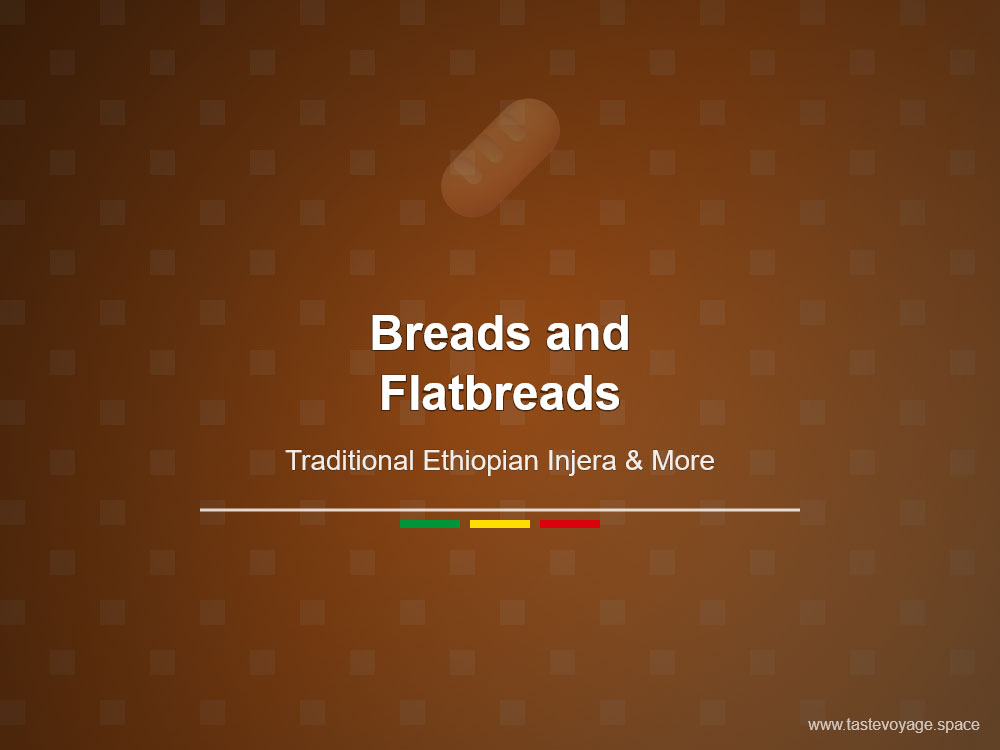Quick & Tasty Ethiopian Flatbread – Ready in 30 Minutes!
Travel the World Through Food >> Breads and Flatbreads>>Ethiopian Cuisine>> Quick & Tasty Ethiopian Flatbread – Ready in 30 Minutes!
Quick & Tasty Ethiopian Flatbread – Ready in 30 Minutes!
Discovering the Rich Heritage of Ethiopian Flatbread
Ethiopian flatbread, known locally as injera, is more than just a staple in Ethiopian Cuisine; it is a symbol of cultural identity and tradition. This unique bread embodies the rich history and culinary artistry of Ethiopia, a country renowned for its diverse and vibrant food landscape. Its distinct taste, spongy texture, and cultural significance make injera a fascinating dish that has captivated food lovers worldwide.
The Cultural Significance of Injera in Ethiopian Life
Injera holds a special place in Ethiopian culture, serving as both a food and a social connector. Traditionally made from teff, a tiny grain native to Ethiopia, injera is often prepared for communal meals. It acts as a natural plate, with various Stews and vegetables placed atop its surface. This shared experience fosters a sense of togetherness and community, reflecting Ethiopia’s deep-rooted hospitality and social values.
Injera’s role extends beyond nourishment; it is part of spiritual and ceremonial practices. Many celebrations and religious events incorporate injera as a central element. The act of sharing this bread symbolizes unity, respect, and the importance of tradition. Its significance is woven into the fabric of Ethiopian life, blending culinary artistry with cultural expression.
Culinary Significance and Unique Characteristics
The magic of injera lies in its unique preparation and flavor profile. Made from teff flour, water, and a natural fermentation process, the bread develops a tangy taste and a light, airy texture. Its porous surface is perfect for scooping up flavorful stews, making it an integral part of Ethiopian culinary traditions.
Ethiopian cuisine is renowned for its bold spices and hearty flavors, and injera complements these dishes beautifully. It acts as both a utensil and a dish, capturing the essence of the flavors while adding its own subtle sourness. The bread’s versatility allows it to serve as a base for various vegetarian and meat-based dishes, showcasing the diversity of Ethiopian culinary practices.
An Accessible and Timely Introduction
While authentic injera can take days to ferment and prepare, modern adaptations, like the 30-minute version, make this culinary marvel more accessible for home cooks and food enthusiasts around the globe. These quick recipes preserve the essence of traditional injera while offering a practical way to experience its cultural richness.
Celebrating this dish in its simplified form invites more people to explore the fascinating world of Ethiopian cuisine. It provides an opportunity to appreciate the artistry behind the bread and its importance as a cultural symbol. Whether served for a special occasion or a casual meal, injera’s inviting aroma and unique flavor make it a memorable experience.
Embracing the Spirit of Ethiopian Culinary Heritage
Injera embodies the warmth, tradition, and resilience of Ethiopian culture. Its distinct taste and cultural role make it a standout in the global culinary scene. By exploring this flatbread, you not only enjoy A Delicious dish but also gain insight into the rich heritage that shapes Ethiopian food traditions.
In conclusion, the Ethiopian flatbread is much more than a bread—it is a celebration of history, community, and culinary artistry. Its simple yet profound presence at the table offers a taste of Ethiopia’s vibrant cultural landscape. Embrace this culinary journey and enjoy the flavors and stories baked into every bite.
